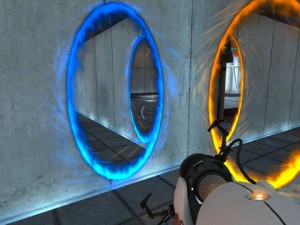The recently released Disgaea D2 (Be sure to read the excellent review by Imitanis here.), along with the rest of the Disgaea series, have an element that has all but disappeared from many games, the element of experimentation. Games have steadily raised the bar in graphics, sound, and scale. This has helped attract millions of new gamers because video games are rapidly shedding the image of being for children. Unfortunately, the growing audience has also gave way to developers delivering either a simplified experience or reverting to a giving players lengthy tutorials to explain everything.
The worst of these methods is, without a doubt, using lengthy tutorials to teach the player how to play the game. These tutorials are often extremely intrusive on the player’s experience, and can ruin any immersion that has been created by the game. Not only do these extensive tutorials shock the player out of the game’s world, they take away any need to experiment with a new gameplay mechanic as all of its uses are explained with in-game text. The only way I have seen this method not be a burden on a game is found in Grand Theft Auto and Saint’s Row, these games have small text boxes that do not interrupt the action, but explain how to play the game. In the case of Grand Theft Auto V, boxes continued to appear during the first half of the main story, but I never found myself annoyed by their presence.
Games with simplified controls can fall on either side of the argument. Portal is an excellent example of beautiful execution because of simple controls. The player is limited to walking, shooting two types of portals, and jumping, but through the use of these four actions, the player is able to solve twenty puzzles. These puzzles often required a bit of experimentation before the solution could be worked out. Portal succeeds because its simplified controls fit so well with the other gameplay elements. Other FPS games, like entries in the Call of Duty series rapidly become repetitive because the limited mechanics are rarely used in situations that do not involve shooting waves of terrorists.

Disgaea’s depth makes later parts of the game fairly inaccessible for those with short attention spans.
The Disgaea games at first glance appear to offer a straight-forward SRPG experience, but the depth of the games extends far past their Netherworld setting. The beginning of the game contains a few maps that serve as basic tutorials for the game’s main mechanics. The true magic of Disgaea shines through even during these early stages as the mechanics introduced are only partially explained, and the tutorial levels themselves may be completed even if the player ignores the new mechanics. The player’s curiosity is further piqued by in-game mentions of things like the Item World and Item Rarity. These things are only mentioned, and while the player can find a bit more information through the game’s help menus, they are largely expected to experiment and make their own discoveries. While the Disgaea games can be enjoyed and completed with minimal knowledge, they become even more enjoyable as the player experiments and tries to create maxed-out characters.
Disgaea is not the only game that follows this method of gameplay, many other games from Japanese developers stick to this method as well, but Western developers lean towards using tutorials to drive the early portion of a game. One reason Western developers opt for this route is their games are designed with the purpose of appealing to the majority of gamers. Lengthy tutorials all but eliminate the risk that a new player will be lost and frustrated with their new purchase. Besides catering to the masses, developers use lengthy tutorials because it is very hard to nail the balance that Disgaea does. Riding the line in the way that Disgaea does has the all the potential for blowing up in a developer’s face. This is an issue that plagued The Wonderful 101, a game that many people required the help of YouTube videos so that they could understand the controls and mechanics.
All three of these methods can result in a great gaming experience, but they must be implemented correctly. Simplistic controls are just as difficult as deceptive depth for developers to master because the rest of the game must be designed to make the most out of the few actions granted to the gamer. Both methods allow players to make discoveries on their own through experimentation. Not only does this give people like me a deeper sense of accomplishment when completing a game, it allows the younger generation to develop skills (like problem solving) that benefit them in the real world, something that spoon feeding the information to them would not be able to do. Unfortunately, the industry is moving away from these types of games, striving to make complex games as easy to pick up as an educational Sesame Street game. As long as NIS does not go the path of ATLUS and get purchased by SEGA, I think I’ll be alright.
